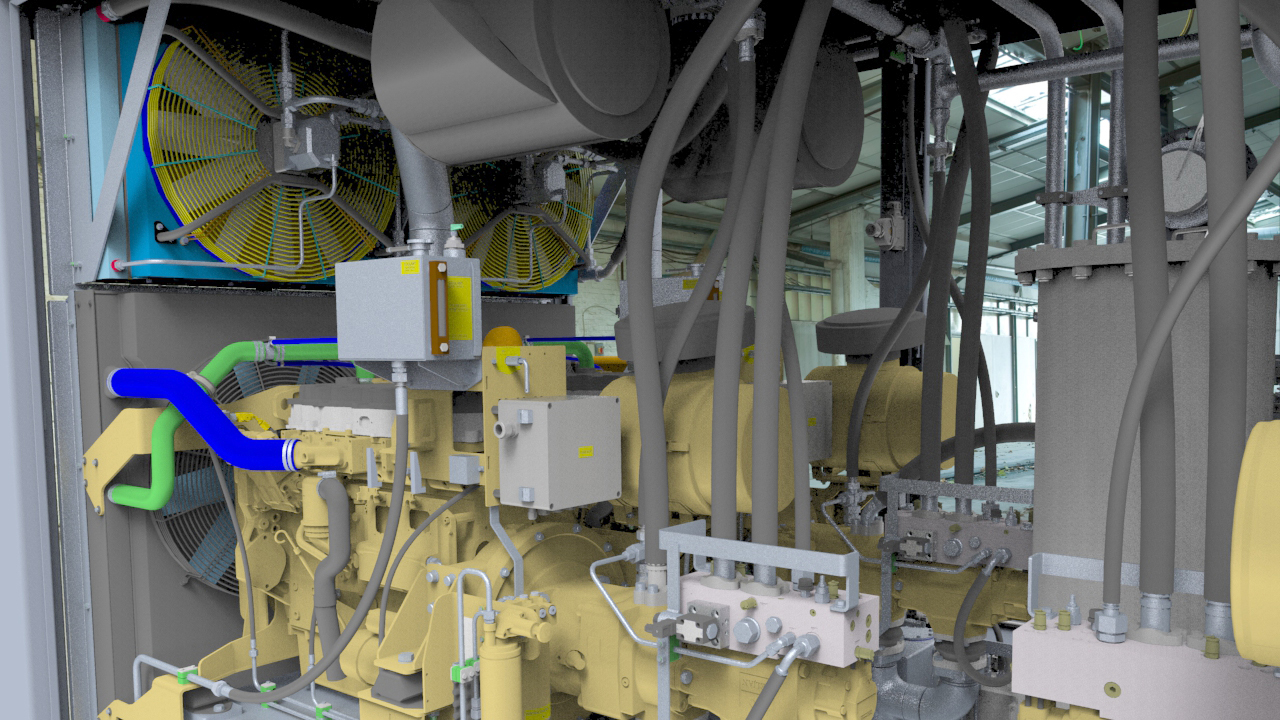Hydraulic power manufacturer cuts down reliance on prototypes
Hydraulic power manufacturer cuts down reliance on prototypes

Case Study
Hydraulic power manufacturer uses Solid Edge and Femap to reduce number of prototypes by 80 percent
Hydrauvision
Siemens Digital Industries Software solutions enable Hydrauvision to create more detailed designs and enhance simulation accuracy
Providing operational confidence
Hydrauvision specializes in producing hydraulic, pneumatic and mechanical drives and systems for a variety of industries, including industrial machinery and heavy equipment, petrochemical, offshore and dredging, offshore infrastructure, and marine. The company was founded in 1973 and is headquartered in Schoondijke, Netherlands.
Hydrauvision’s hydraulic units are used in rugged environments and must withstand a lot of stress, so it is critical that the firm’s customers have confidence that Hydrauvision’s products will withstand operational and environmental rigors.
“There’s a lot of pressure applied to a hydraulic unit and often the tanks are irreplaceable,” says Alex van’t Westeinde, Hydrauvision’s mechanical design engineer. “If the unit’s tank can’t take it, it will blow up due to applied pressure onto the inner surface of the tank. The tank is often a dominant substructure inside a hydraulic power unit, which can cause a lot of damage to surrounding components or the entire unit when it blows up. This can significantly harm operations as well.”
Hydrauvision’s hydraulic power units have been used in a variety of high-profile projects, such as the Venice, Italy flood barrier project. The company’s tension winches were used to place the huge barriers, each weighing 250 to 350 tons. Its units have also been used by many well-known companies such as Ampelmann, which builds offshore access systems that allow personnel to walk safely from moving vessels to offshore structures such as windmills and oil and gas platforms.
Reducing build time
To make sure that its hydraulic units can stand up to strong demands, rugged environments and meet international standards, Hydrauvision selected Solid Edge® software and Femap™ software, both from Siemens Digital Industries Software.
Hydrauvision uses Solid Edge for design as well as simulation.
“We’ve found that Solid Edge enables us to do a much more detailed design than was possible in the past,” says van’t Westeinde. “In addition to the core product, we use several add-ons that really help us, including for sheet metal design, piping and simulation. We try to design by including every detail, such as fasteners, to exclude delays in the production process due to design errors.
“With Solid Edge, it keeps getting easier to get to a higher level of detail and, as a result, it takes less time to build the machines.”
Building a better container
Typically, Hydrauvision connected multiple hydraulic power units to a 20-foot International Standards Organization (ISO) container frame. However, based on future projects, the firm determined that it needed more power in a standard size 20-foot container.
The structural and certification demands for this unit were quite high, including a Det Norske Veritas (DNV) offshore lifting appliance, integrated heavy pad eyes, load tests and certified materials. According to the convention for safe containers (CSC) rules, the cases had to be stackable up to 10 containers. There also needed to be a primary structure with no side sections or roof panels. The problem was that it didn’t meet certification standards when the side sections and roof panels were cut out, because it was too weak and needed more stiffness.
As a result, Hydrauvision decided to address the problem by using Solid Edge to design and assess a new container. In addition to using the core Solid Edge product, Hydrauvision utilized the piping, sheet metal design and simulation applications of Solid Edge.
The company then performed stress calculations on the primary structure using Femap. Using Femap permitted Hydrauvision to precisely determine the maximum gross weight, impact loads and lifting loads. It also enabled it to use CSC certification preparation to determine applicable load cases according to ISO 1496 allowable stresses and permitted deformation for container stacking and bottom lifting.
By using Femap, Hydrauvision was able to simulate all required loading conditions accurately so that only a single physical test was required to achieve CSC certification. In the past, it had been necessary to produce as many as five prototypes, so by using Femap, the firm realized an 80 percent drop in the number of prototypes.
